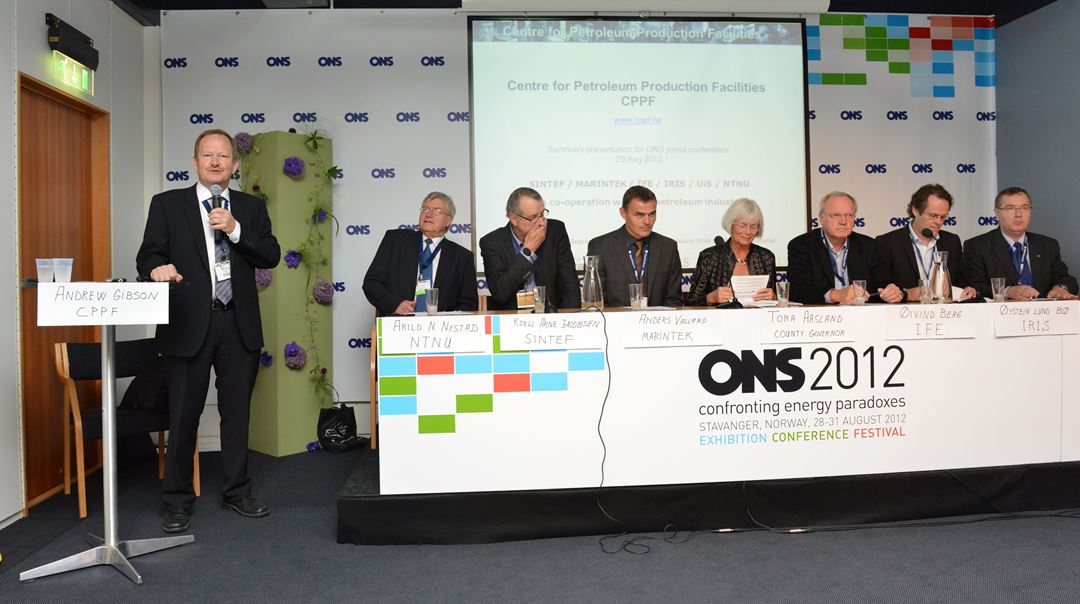It is issues just like these which the recently inaugurated research venture "Centre for Petroleum Production Facilities – Operations and Safety" is intending to address. The centre is a joint initiative launched by SINTEF, MARINTEK, the University of Stavanger, NTNU, IFE and IRIS.
The main aim of the research centre is to work to extend the lifetimes of producing fields and to prevent major accidents. Also on the centre’s list of activities are the improvement of operations, installation integrity and value creation, and the more efficient management of both new and aging production installations.
The centre is now discussing partnerships with oil and gas operators.
“Operators on the Norwegian continental shelf are facing many challenges”, says Project Manager Andrew Gibson at MARINTEK. "We shall apply our combined research expertise to generate innovative solutions based on real cases. This is why we are reliant on close collaboration with the oil and gas industry so that we can come up with robust and progressive solutions”, he says.
This idea is supported by Tora Aasland, current Rogaland County Governor and former Norwegian Minister for Education and Research. She was full of praise for the initiative when she gave the inaugural speech for the centre during the oil industry’s ONS expo in Stavanger in September.
“The competition among the institutes to obtain resources for oil and gas sector research is very tough”, she said. “And this is how it should be. However, if we are to meet future challenges, we cannot expect that every institute or university will be able on its own to establish sufficient expertise to address issues linked to major accidents and the extension of operational lifetimes”, she said. “What is good about this initiative is that we have six institutes which all realise that they will be stronger working together than in isolation. The whole world is crying out for the expertise that the centre will now be supplying”, said the former minister. She then added that she would communicate the importance of this project within her Parliamentary network.
This was music to the ears of the centre’s founders, who have set themselves ambitious goals. Andrew Gibson has worked in various European countries as well as in the sultanates of both Brunei and Oman with field development in the South China Sea and the Arabian desert respectively. He explains that the geographical differences between these locations allow entirely different intrinsic safety initiatives and operating cultures.
”However, risk and barrier management, the aging of production infrastructure and human factors are just as important wherever you are”, says Project Manager Gibson. ”We have set ourselves demanding targets, and believe that we have put together a “Norwegian national team” in R&D. But with potential international collaboration with countries such as Malaysia and Brazil, it will be possible for us to perform at an even higher level”, he adds.
Christina Benjaminsen

